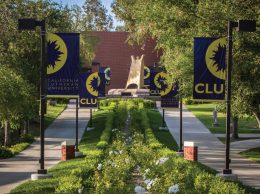Our view: This recovery, like the last, will be Latino-led
Latinos were the unsung heroes of the U.S. recovery from the Great Recession, and they will lead the national economy out of its current pandemic slump.
Those are the subtexts behind the latest annual report on the Latino economy, produced jointly by the Center for Economic Research and Forecasting at California Lutheran University and the Center for the Study of Latino Health and Culture at UCLA and released on Sept. 24, during Hispanic Heritage Month.
The chief researchers, Dan Hamilton at CLU and David Hayes Batista at UCLA conclude that thanks in part to high rates of employment and consumption, Latino populations in the U.S. led the nation in economic output and spending, playing a pivotal role in keeping the U.S. economy advancing amid a growth challenge from China.
In a nod to that rising role, on Sept. 23 the California State University system named Fresno State University President Joseph I. Castro to become the eighth chancellor of a network that includes Cal Poly San Luis Obispo and CSU Channel Islands.
The UCLA-CLU report shows that from 2017 to 2018, the Latino GDP in the U.S. grew from $2.3 trillion to $2.6 trillion, a rate described in the report as “breathtaking” and faster than the overall growth rate of China or India. As a separate country, Latino GDP would “be the eighth largest in the world,” the report states, larger than that of Korea, Italy or Brazil.
The report says that consumption by Latinos grew 133 percent faster than consumption by other Americans from 2010 to 2018, driven by “rapid gains in educational attainment and strong labor force participation.” Latino wage growth, for example, averaged 8.6 percent annually versus 5.1 percent for non-Latino populations.
The 2020 report is funded in part by the Latino Donor Collaborative, a bipartisan group of Hispanic executives and business leaders.
It hints strongly that U.S. growth in recovery from the pandemic will be led by strong Latino employment and consumption growth. As the economy recovers and unemployment falls, high levels of Latino workforce participation—69 percent versus 63 percent for the non-Hispanic population—will provide the workers needed to keep the U.S. economy growing, the report concludes.
If the U.S. is to continue to lead the world in GDP rankings, it will be counting on its Latino population to fuel its progress.
STATE OF PHILANTHROPY
The Santa Barbara Foundation is the celebrating 92 years in 2020 amid a pandemic that is testing the resolve of our philanthropic and business communities.
But the foundation, one of the region’s largest, has been through these trials before. Through the Great Depression, water shortages and disaster recovery, the foundation has a history of forming effective partnerships and recognizing emerging social issues.
In recent years, the foundation has embraced a countywide view of poverty and social services, a view that enabled it to expand its impact. It also has its first woman CEO, Jackie Carrera, who has engaged with her peers in Ventura and San Luis Obispo counties. At 92, the Santa Barbara Foundation is thinking toward the future.
The Business Times will host a “State of Philanthropy” Zoom discussion with the CEOs of the three community foundations on Sept. 29. Information is on the foundation’s website.











